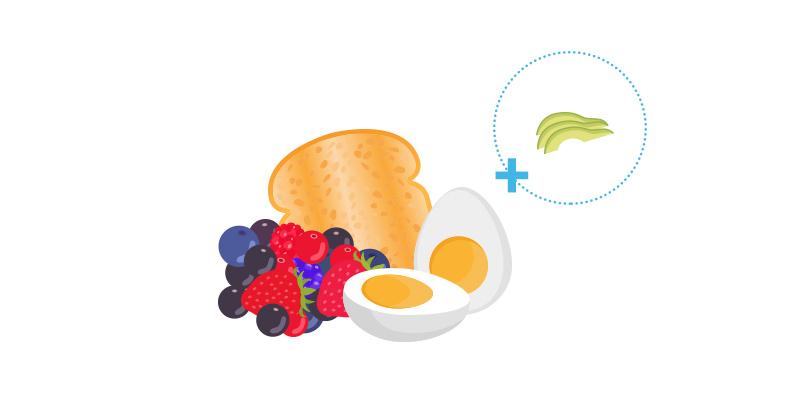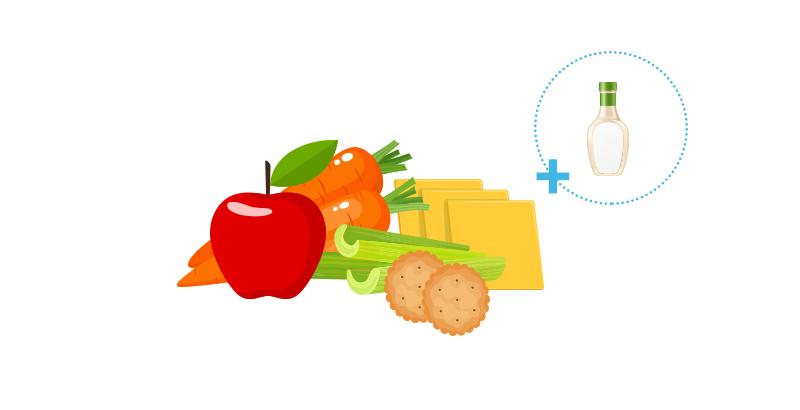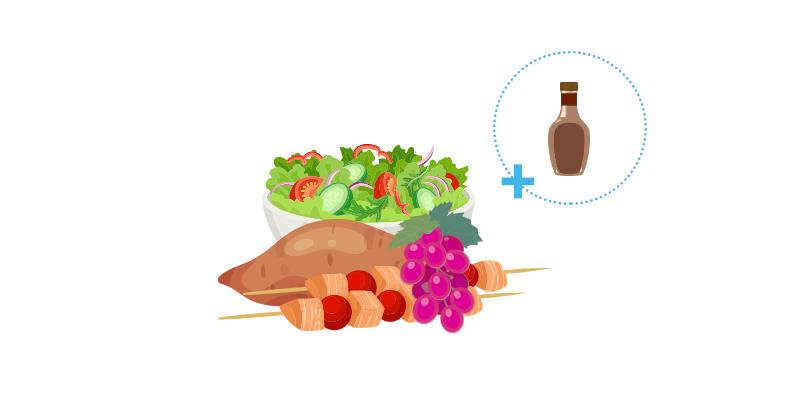Here's a breakfast example:
1. Mixed berries (fruit)
2. Egg (protein)
3. Whole-wheat toast (whole grain)
+. Sliced avocado (healthy fat)
A balanced meal has the right proportions of healthy foods to give your body the energy and nutrients it needs and keep you feeling good! Try using the plate model to plan a balanced meal.
Think: 1,2,3, + ! Imagine a plate divided into sections. Each section has a number (1, 2, or 3) and there’s a plus (+).
Click on the sections of the plate to learn about the foods that go in each.
Click the sections of the plate to learn about the foods that go in each.
Click the sections of the plate to learn about the foods that go in each.
Fill about half your plate with non-starchy vegetables or fruits. These are green/go foods.
Fill a quarter of your plate with protein.
Fill a quarter of your plate with beans, a starchy vegetable, or a whole grain. Beans are green/go foods. Starchy vegetables and whole grains are yellow/be careful foods.
Drizzle, sprinkle, or spread a dollop of healthy fat.

Here's a breakfast example:
1. Mixed berries (fruit)
2. Egg (protein)
3. Whole-wheat toast (whole grain)
+. Sliced avocado (healthy fat)

Here's a lunch example:
1. Carrots, celery, and an apple (vegetables and fruit)
2. Cheddar cheese (protein)
3. Whole-grain crackers (whole grain)
+. Ranch dressing for dipping carrots and celery (healthy fat)

Here's a dinner example:
1. Salad greens and fresh fruit (vegetables and fruit)
2. Grilled chicken breast (protein)
3. Sweet potato (starchy vegetable)
+. Italian dressing (healthy fat)
Some foods don’t fit nicely on a plate — like stir fries, yogurt parfaits, smoothies, soups, and casseroles. That’s OK. Use a bowl or cup and think “1-2-3-+” to create a balanced meal.